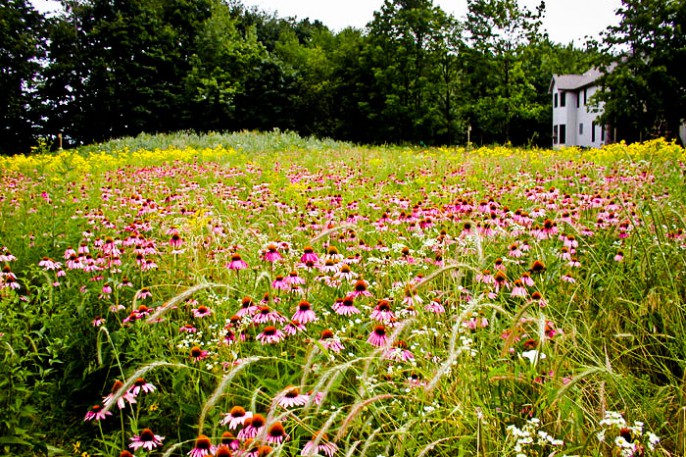Native Meadow
A meadow is a field made up of grasses and herbaceous vegetation rather than woody vegetation. This means that the vegetation has no permanent stem above ground, so their stems and leaves die to ground level at the end of their growing season. A native meadow is one planted with native plants.
Installing a native meadow provides you and the environment with many advantages over having a lawn. Besides their aesthetic properties, native meadows attract a diversity of native wildlife like birds and butterflies, providing them with food and shelter. Additionally, meadows require much less maintenance than a lawn, only needing to be cut once a year. This not only saves time and mowing costs, but also reduces emissions, gas, and energy used to operate lawn mowers, weed whackers, and other lawn equipment.
Creating a Meadow

Native wildflower meadow. Image courtesy: Chesapeake Bay Program
Installing a native meadow takes a little more than planting native grasses and flowers on your lawn. There are certain factors one must take into consideration, including:
- Soil type: You want to pick plants that will thrive in your soil type whether it be dry, medium, or wet.
- Bloom times: Picking plants that bloom at different times will ensure that your meadow is always blooming, and always changing.
- Plant groups, height, and color: Having diversity in your meadow will attract a variety of animals, as well as making your meadow more aesthetically pleasing.
- Include native grasses: A healthy meadow is made up of 30%-70% grass.



